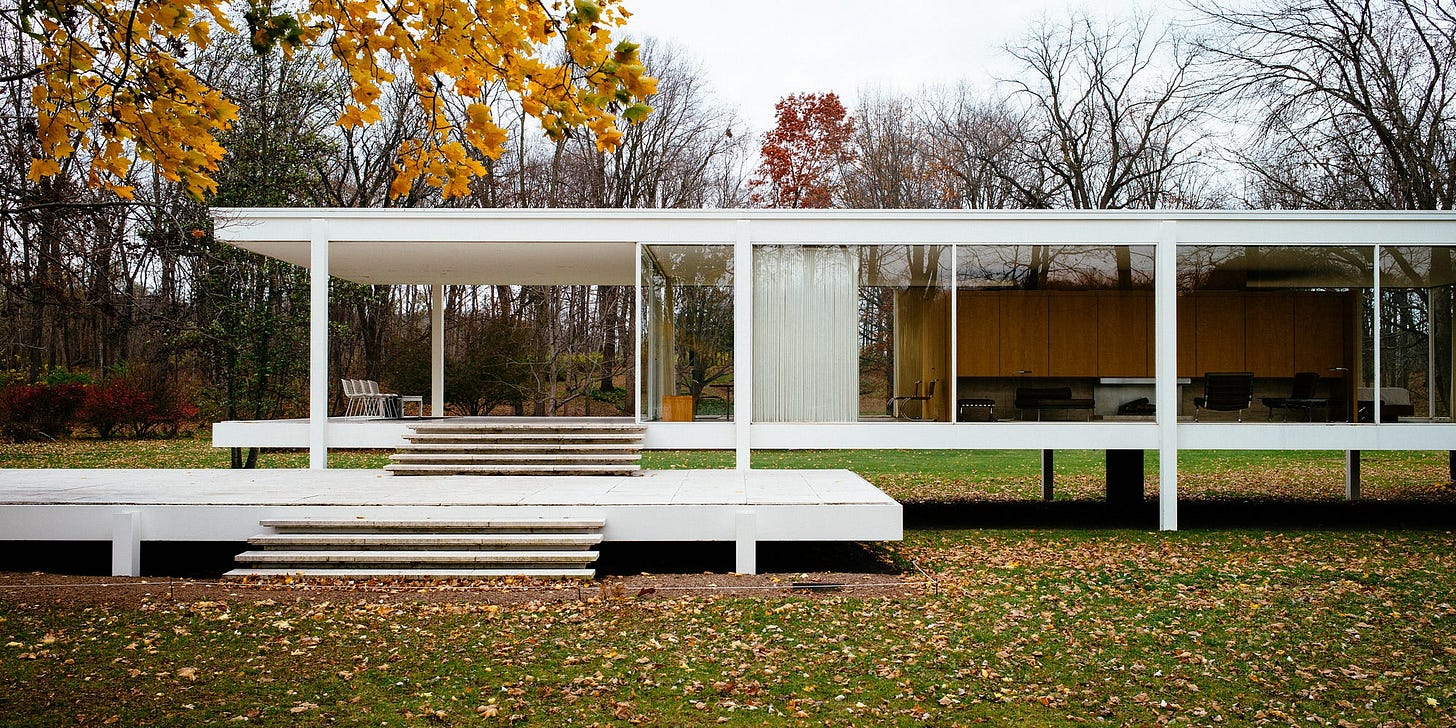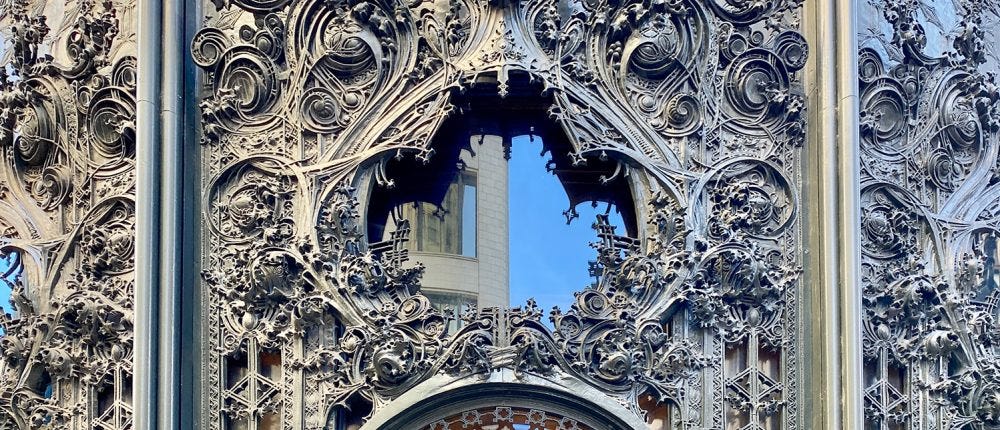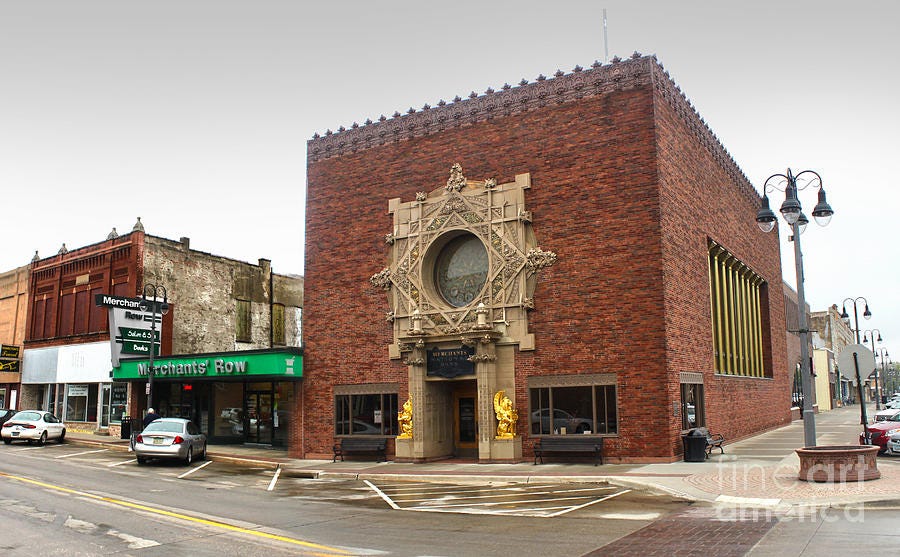This Substack is by David Perrine. I write about architecture, aesthetics, design theory, and philosophy. I share new posts weekly. If you enjoy my work, please consider subscribing.
Most architects will tell you that good buildings multitask. They act as sculptures, cultural artifacts, machines, dwellings, shelters, signs, and more—successfully wearing all these hats simultaneously.
But over time, the real estate industry and other institutions have slowly but successfully convinced us that the laundry list of tasks that buildings perform is incomplete. Not only that, the list is missing the most important role buildings play: financial assets.
This is especially true in the housing market. PE firms like BlackRock have invested heavily in residential properties, focusing on returns. In many cities, luxury apartment towers are mostly vacant, not because there is no demand but because these units are more valuable as speculative assets than as homes.
This has resulted in a recent decline in homeownership rates, which has negatively affected communities.1 In addition, if a future owner isn’t carrying out construction on a home, then the space will lack aesthetic investment. Instead of buildings that are built with the intent to be homely, these are constructed with the goal of being slightly less ugly than the surrounding dwellings on the market. It is playing defense, trying to avoid too much criticism without actually providing a meaningful impact on the community it inhabits.
Developers often discuss aesthetics as an independent parameter of architectural design. They will tell you that a building's functionality is not affected by how it looks. This is often followed by the discussion of cost. Buildings are so expensive that no one has the money to invest in something as impractical as beauty.
“It doesn’t matter if a cat is black or white as long as it catches mice” - Deng Xiaoping
This is complete nonsense. Not only has the construction of complex architectural forms become more straightforward and cheaper over time, but even the early hyper-functionalists understood the importance of 'unnecessary' ornamentation. The adage "form follows function" was never meant to justify a rigid and dogmatic austerity. Instead, the intent was to integrate beauty and function into a new system—a call for elegance and cohesion.
The ugly Modernist architecture we see today is not a proper implementation of broken methodology as many believe. On the contrary. It is the flawed implementation of a proper, elegant, and beautiful methodology.
I am reminded of Louis Sullivans's words when writing this.
Whether it be the sweeping eagle in his flight or the open apple blossom the toiling work horse, the blithe swan, the branching oak, the winding stream at its base, the drifting clouds, over all the coursing sun, form ever follows function, and this is the law. Where function does not change form does not change. The granite rocks, the ever brooding hills, remain for ages; the lightning lives, comes into shape, and dies in a twinkling.
It is the pervading law of all things organic and inorganic, of all things physical and metaphysical, of all things human and all things superhuman, of all true manifestations of the head, of the heart, of the soul, that the life is recognizable in its expression, that form ever follows function. This is the law.2
This shares contours with a quote from contemporary architect, Patrick Schumacher who was the business partner for Zaha Hadid.
It is the sense of law-governed complexity that assimilates this work to the forms and spaces we perceive in organic as well as in inorganic natural systems, where all forms are the result of lawfully interacting forces. Just like natural systems, elegant compositions are so highly integrated that they cannot be easily decomposed into independent subsystems – a major point of difference in comparison with the modern design paradigm of clear separation of functional subsystems. In fact the exploitation of natural forms like landscape formations or organic morphologies as a source domain for analogical transference into architecture makes a constructive contribution to the development of this new paradigm and language of architecture.
Frei Otto went a step further and literally harnessed the lawfulness of physical systems as form-finding procedure to generate his design-morphology. The results have been striking. Lars Spuybroek has described these processes as “material computing”. Such analog form-finding processes can complement the new digital design tools that might in fact be described as quasi-physical form-finding processes.3
The misuse of austerity that plagues our skyline has nothing to do with Mies, Breuer, or Corbusier. The austerity comes from the heavy use of mass production and cost-cutting. Although the architects listed also heavily utilized mass production and cost analysis, they successfully aestheticized the process. Today's skyline is mostly filled with buildings masquerading as modernist, i.e., utilizing mass production without the methodology and rigor that Modern architecture requires.
Aesthetics is inequitably distributed in our communities. Buildings like gas stations, grocery stores, public housing, convenience stores, office buildings, and coffee shops are built without serious aesthetic consideration because, supposedly, there is no use for these spaces to be beautiful. It is not worth the time or money. A beautiful Trader Joe's will not suddenly increase their revenue. A Zaha Hadid office building will not increase the productivity of the workforce.
Instead, aesthetic investment is dedicated to buildings that benefit from said resources. Art museums will get more visitors if the building itself is beautiful or iconic.4 Sublime cathedrals play a significant role in the tourist market in Europe, which is why they are maintained.5
I am frustrated with this market externality because the buildings that get these aesthetic investments are spaces in which we spend such a small share of our lifetime. I spend almost all of my time in my dwelling or at my places of work. I make regular trips to my gym, grocery store, or convenience store. None of these spaces are wonderful. On the other hand, I visit the Chicago Art Institute at most every 2-3 months. Same with the Cultural Center. I visit the Robbie House or other pieces of architectural history every few years. Of course, I could visit the Art Institute more, but I will never be there as much as in the local Trader Joe's.
This feels so backward. Why is it that the buildings I spend the least amount of my life in happen to have the most aesthetic consideration, while the buildings I visit weekly are lightly decorated warehouses? My life would be so much better if such a condition was reversed. Imagine your grocery store, fitness center, or convenience store was built by the architects who designed your favorite art museum. You could experience the enrichment from being in these spaces weekly. I would argue that art museums should be as cheap as possible, without damaging the art of course. We spend such a small share of our lifetime in these spaces. I would rather have a Zaha Hadid x Whole Foods that I visit weekly than a Zaha-designed Sports Arena I visit once a year.
Since our current administration is interested in using the executive branch to dictate how buildings should be designed,6 I would like to propose an alternative executive order: Buildings that are used regularly by the local community (such as public schools, churches, stores, libraries, etc.) are eligible for grants which cover the architectural fee if the client chooses to hire a high end, design architecture firm.
Before you tell me this is unrealistic, an almost identical financial structure was used by a small city within the US to incredible success.7
We’ve normalized a world where aesthetic investment is terribly distributed, something reserved for rare cultural landmarks while the buildings that shape our daily lives are stripped down. I hope one day, we can collectively find the words to demand better.
Thank you for reading. Please consider subscribing.








Columbus, Indiana?
I was impressed by how pleasant those images were